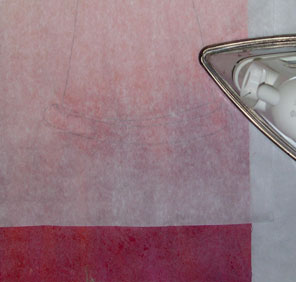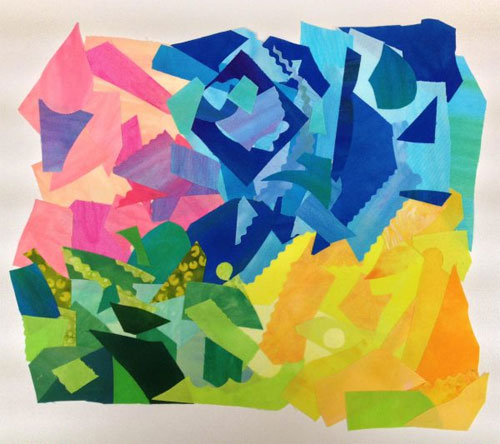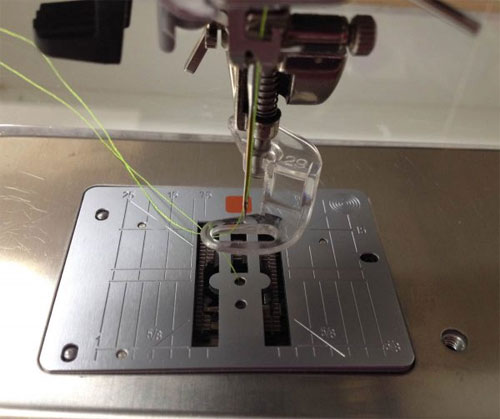The Lazy Daisy stitch is often used to create flowers but it has the potential to create pattern on the surface of fabric too. Here you see rows of the Lazy Daisy separated by lines of the Stem Stitch. I’m using a size 12 Lettuce thread. Lettuce is a fresh green, turquoise, and chartreuse variegated thread.
If you make the loop of the Lazy Daisy stitch wide enough you can fill it in with a French Knot. This builds even more pattern on the fabric surface. These knots are made with a size 12 Oranges thread that offers high contrast with the dark green background fabric and fresh greens in the Lazy Daisy stitches. Isn’t this a beautiful pattern created with the Lazy Daisy stitch?
A Note about Fusible Web

The fusible web I’m using for all the silk fabrics in this design is Misty Fuse. Misty Fuse fusible web is a very lightweight mesh of glue. When you apply it to shear fabrics the glue does not penetrate the silk and appear on the other side of the fabric like the heavier fusible webs used on cotton fabrics.
Misty Fuse does not come with paper. So you must use silicone release paper or parchment paper to transfer it to fabrics. (Please test parchment paper before using.) An added advantage to using Misty Fuse is that it is easy to stitch through. I recommend it highly.








